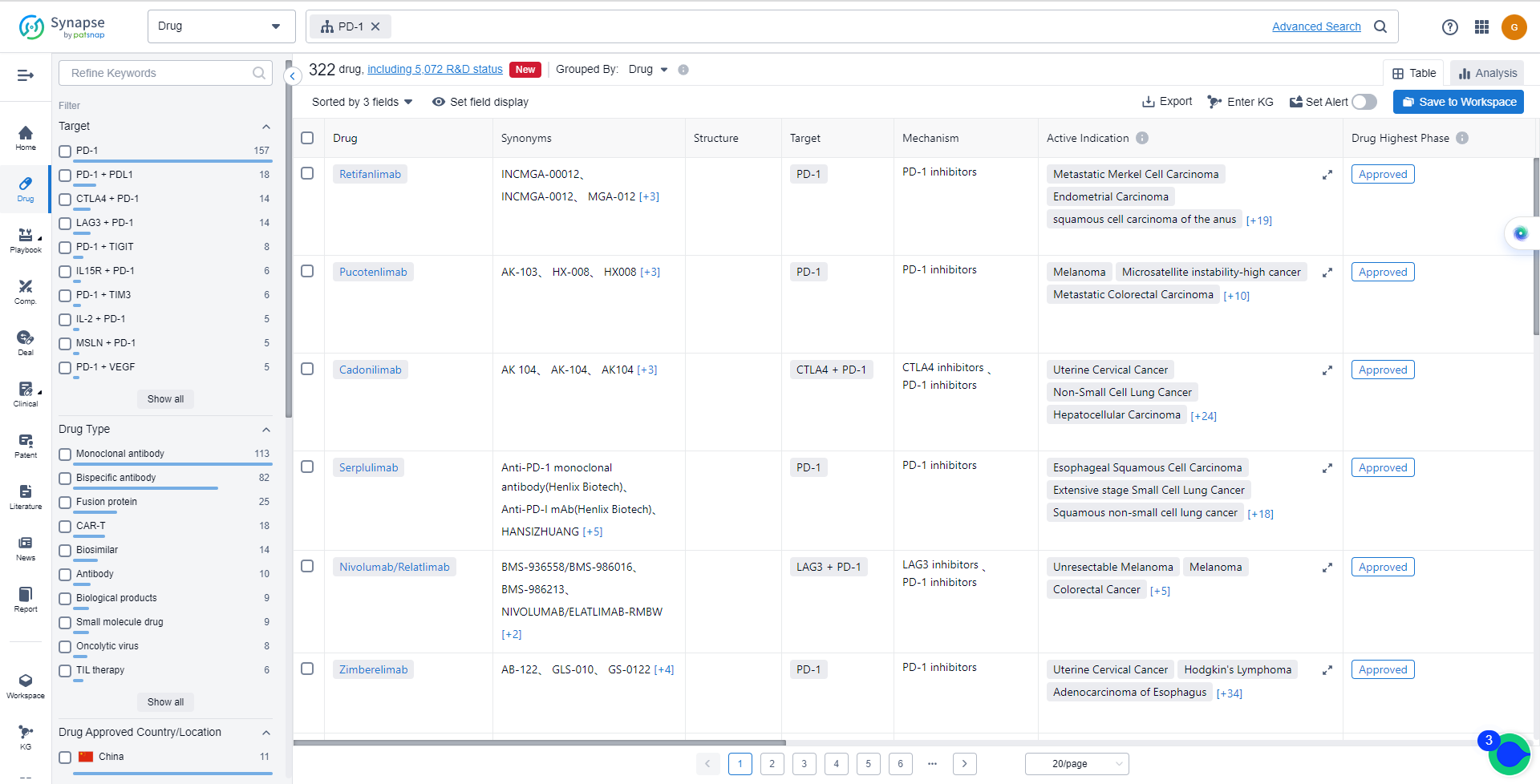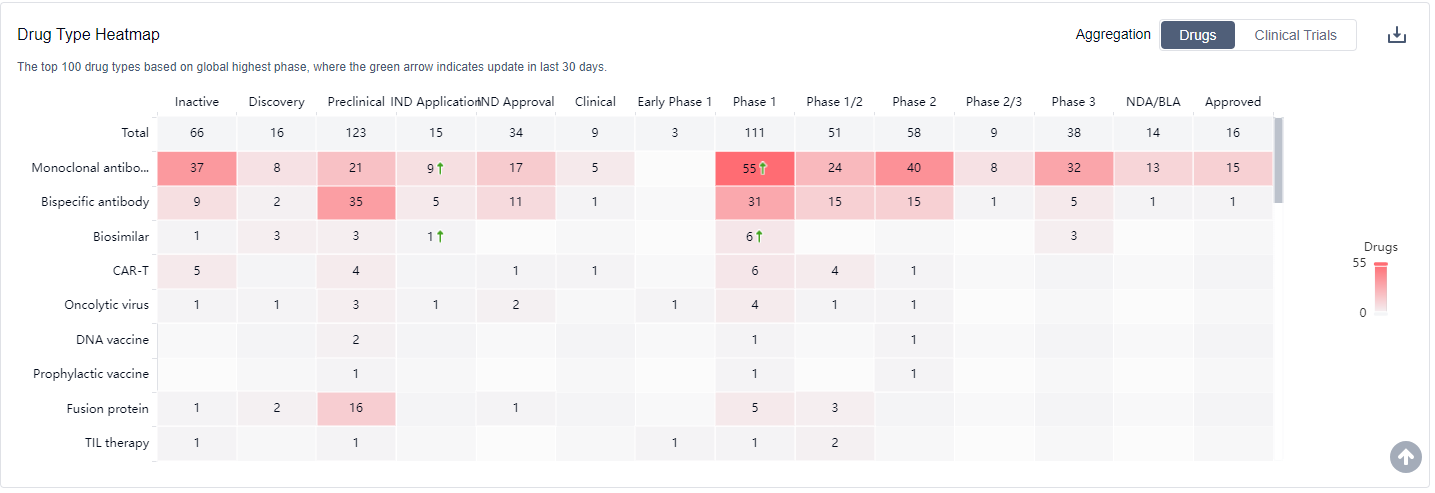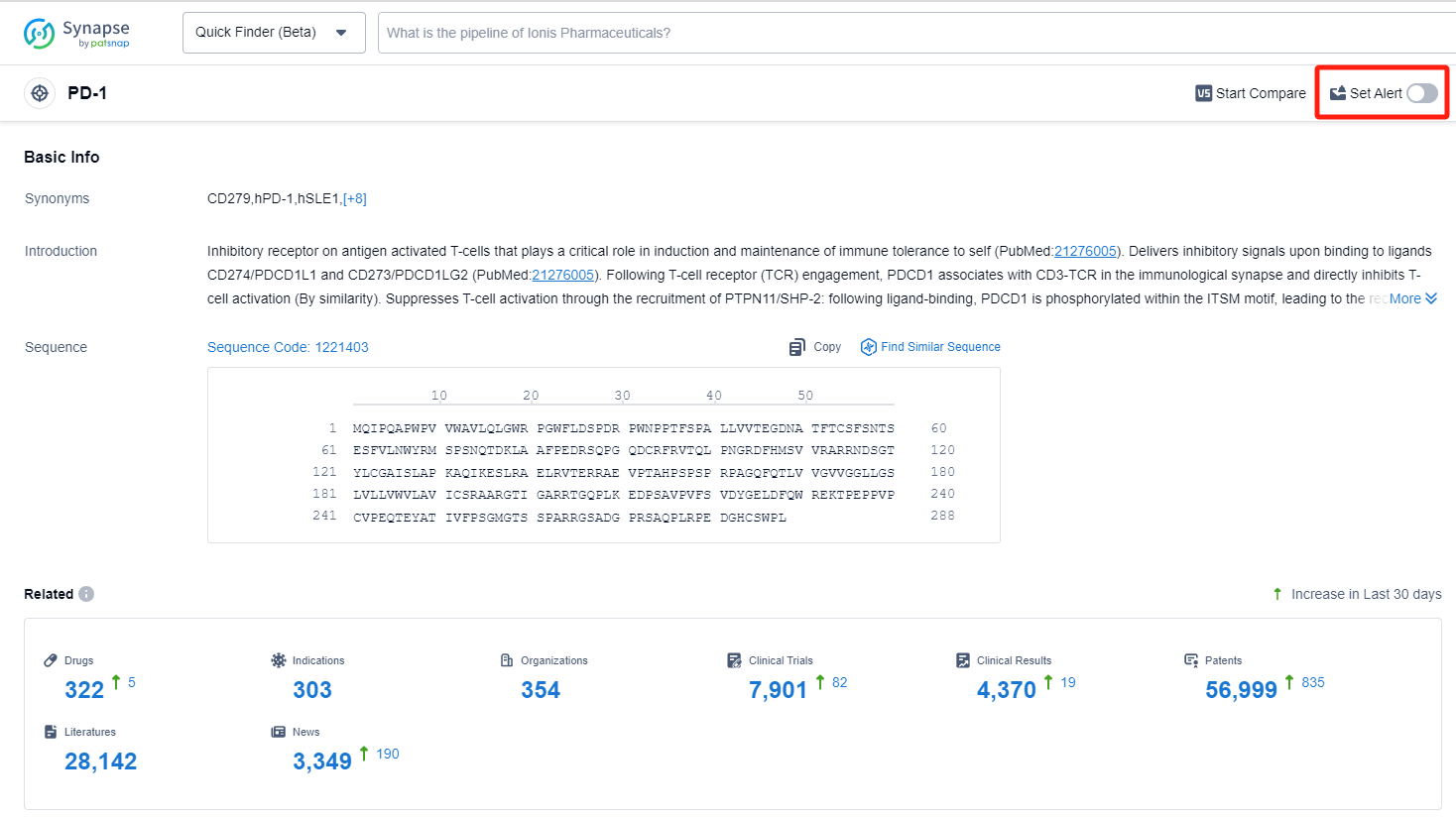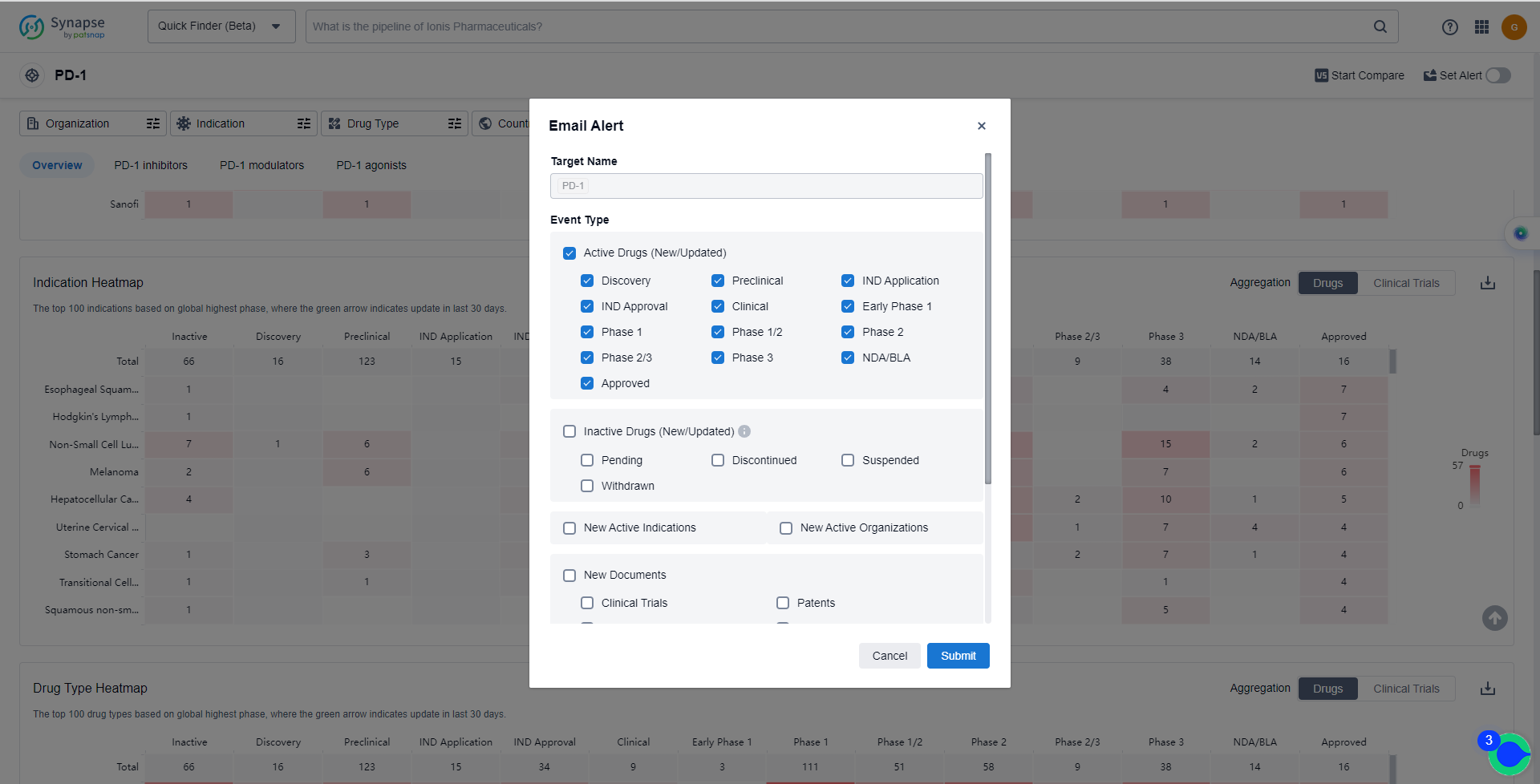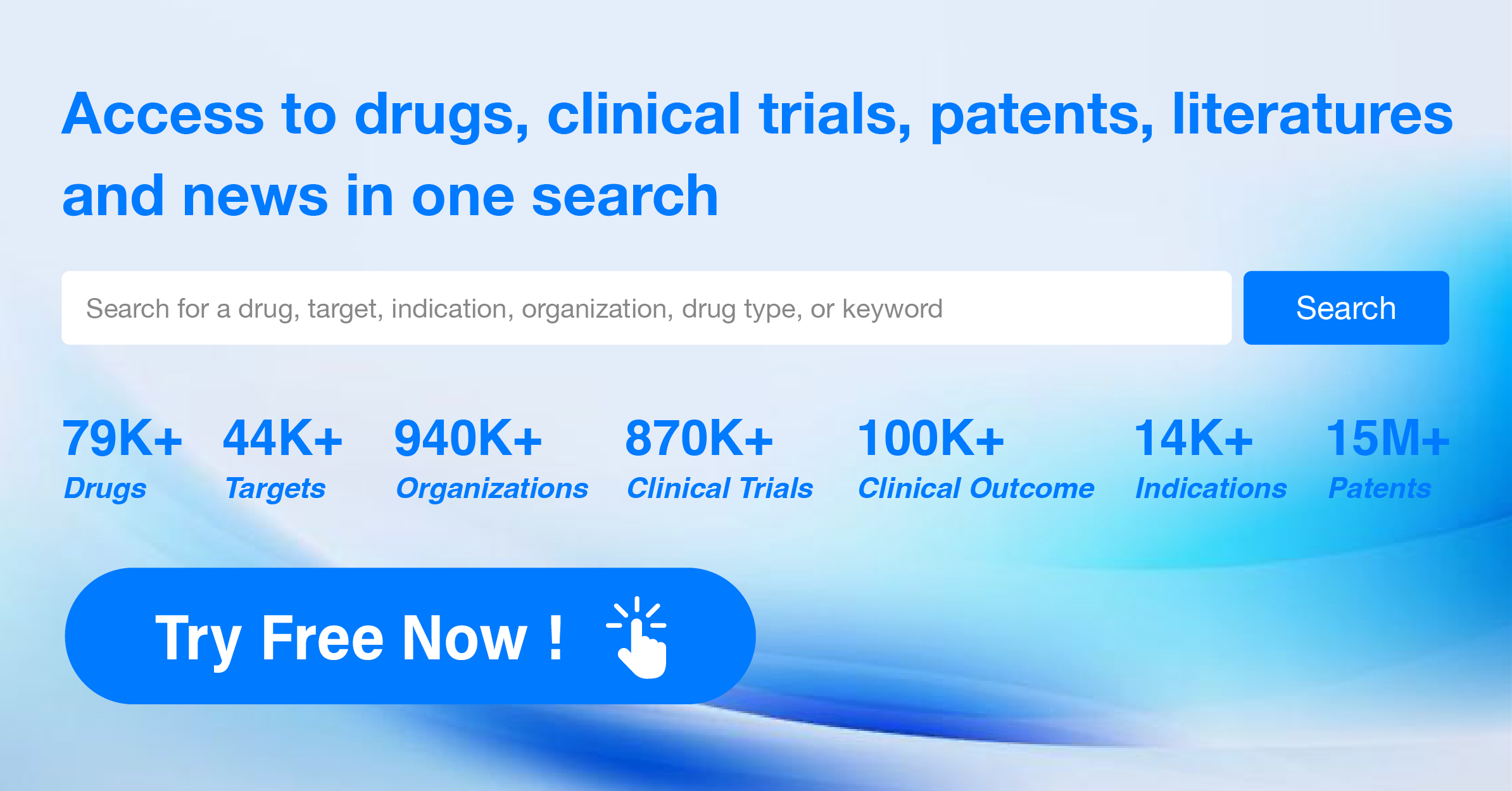Understanding PD-1 Inhibitors and Methods to Keep Abreast of Their Recent Developments
PD-1, or programmed cell death protein 1, is a crucial immune checkpoint receptor found on the surface of certain immune cells in the human body. Its primary role is to regulate the immune response and prevent excessive activation of immune cells, thereby maintaining immune homeostasis. PD-1 acts as a brake on the immune system by binding to its ligands, PD-L1 and PD-L2, which are expressed on various cells, including cancer cells. This interaction inhibits the immune response, allowing cancer cells to evade detection and destruction by the immune system. Targeting the PD-1 pathway has revolutionized cancer treatment, leading to the development of immune checkpoint inhibitors that unleash the immune system's ability to fight cancer.
PD-1 inhibitors are a group of checkpoint inhibitor anticancer drugs that block the activity of PD-1 and PD-L1 immune checkpoint proteins present on the surface of cells. The concept of blocking PD-1 and PD-L1 for the treatment of cancer was first published in 2001. The first clinical trial was launched in 2006, evaluating nivolumab. As of 2017, more than 500 clinical trials involving PD-1 and PD-L1 inhibitors have been conducted in more than 20,000 patients.
The analysis of the target PD-1 reveals a competitive landscape with multiple companies actively involved in the development of PD-1 inhibitors. Akeso, Inc., Bristol Myers Squibb Co., Merck & Co., Inc., and Innovent Biologics, Inc. are leading in terms of R&D progress. The approved indications for PD-1 inhibitors cover a wide range of cancers, including esophageal squamous cell carcinoma, Hodgkin's lymphoma, non-small cell lung cancer, melanoma, and hepatocellular carcinoma. Monoclonal antibodies are the most prominent drug type, followed by bispecific antibodies and biosimilars. China, the United States, and the European Union are the key locations for PD-1 inhibitor development, with China leading in terms of drug count. Overall, the target PD-1 shows a promising future in the pharmaceutical industry, with ongoing research and development efforts focused on expanding indications and improving treatment options for various cancers.
How do they work?
PD-1 inhibitors are a type of medication used in biomedicine to treat certain types of cancer. PD-1 stands for programmed cell death protein 1, which is a protein found on the surface of immune cells called T cells. This protein plays a role in regulating the immune response by preventing T cells from attacking healthy cells in the body.
In some cases, cancer cells can exploit the PD-1 pathway to evade the immune system and continue growing. PD-1 inhibitors work by blocking the interaction between PD-1 and its ligands, which are molecules that bind to PD-1 and inhibit T cell activity. By blocking this interaction, PD-1 inhibitors help to unleash the immune system's ability to recognize and attack cancer cells.
By using PD-1 inhibitors, the immune system can be activated to target and destroy cancer cells more effectively. These inhibitors have shown promising results in the treatment of various types of cancer, including melanoma, lung cancer, kidney cancer, and bladder cancer.
It is important to note that PD-1 inhibitors can have side effects, as they can also affect the normal immune response and potentially lead to autoimmune reactions. Common side effects include fatigue, rash, diarrhea, and inflammation in various organs. However, the benefits of using PD-1 inhibitors in treating cancer often outweigh the potential risks.
Overall, PD-1 inhibitors are a valuable class of drugs in biomedicine that help enhance the immune system's ability to fight cancer by blocking the PD-1 pathway.
List of PD-1 Inhibitors
The currently marketed PD-1 inhibitors include:
- Retifanlimab
- Pucotenlimab
- Cadonilimab
- Cadonilimab
- Nivolumab/Relatlimab
- Zimberelimab
- Penpulimab
- Dostarlimab-gxly
- Prolgolimab
- Tislelizumab
For more information, please click on the image below.
What are PD-1 inhibitors used for?
The approved indications for PD-1 inhibitors cover a wide range of cancers, including esophageal squamous cell carcinoma, Hodgkin's lymphoma, non-small cell lung cancer, melanoma, and hepatocellular carcinoma. For more information, please click on the image below to log in and search.
How to obtain the latest development progress of PD-1 inhibitors?
In the Synapse database, you can keep abreast of the latest research and development advances of PD-1 inhibitors anywhere and anytime, daily or weekly, through the "Set Alert" function. Click on the image below to embark on a brand new journey of drug discovery!
